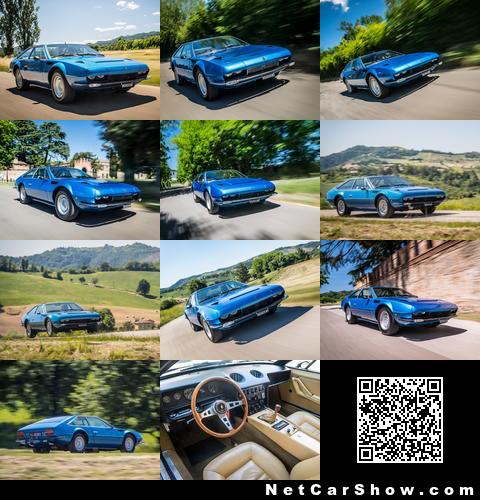Lamborghini Jarama GT
The year 2020 marks the 50th Anniversary of the Lamborghini Jarama GT, presented for the first time at the Geneva Motor Show in March 1970.
The Jarama, whose name derives from an area north of Madrid famous for breeding fighting bulls, was the latest evolution of the company's 2+2 grand touring sedan concept, with a V12-cylinder, 4-liter front-mounted engine. Technically developed based on the previous 400 GT and Islero, it maintained the same mechanical layout but featured a silhouette designed by Marcello Gandini for Carrozzeria Bertone, much more in keeping with the stylistic trends of the '70s, using taut and angular lines.
The chassis was renewed, with a braking system featuring four large discs, of which the front ones were ventilated, track width widened by 10 centimeters to 1,490 mm (58,7 in), and 15" Campagnolo magnesium wheels, to enter the new decade in a manner befitting a sporty Lamborghini.
The engine, powered by six double-body Weber 40 DCOE carburetors, was the well-proven Lamborghini V12, with double overhead camshafts per bank, capable of delivering 350 hp for a top speed of 260 km/h (161 mph).
The bodywork of the pre-series units was assembled by Carrozzeria Marazzi of Caronno Pertusella (Varese), which had just finished production of the Islero, while the series models would be produced in Carrozzeria Bertone's plant in Grugliasco (Turin). The last 100 units of Jarama produced, in 1972, would be "hybrid", with body panels produced by Bertone and assembled at Marazzi.
The interior is very luxurious, with leather upholstery, air-conditioning, and a comfortable passenger compartment for a sports car plus a spacious trunk.
Production of the Jarama, following the 1972 Geneva Motor Show, was expanded with the Jarama GTS version with 365 HP, featuring a transverse air intake on the hood and two air outlets behind the front wheel arches. Inside, it featured a redesigned dashboard with new instruments, and a different shaping of the front seats to improve the roominess in the back. Also different on the "S" version were the alloy wheels: less elaborate and without the single central nut.
The Lamborghini Jarama, of which a total of 328 units were produced, is an important model in Lamborghini's history, not only for its beauty - which has not lost its charm over the last 50 years - but because it was the last front-engined grand tourer proposed by the company. From then on, except for the Super SUVs LM 002 and Urus, Lamborghini cars would only have the rear mid-engine layout.
Units produced
Lamborghini Jarama GT: 1970-1973, 176
Lamborghini Jarama GTS: 1972-1976, 152







![2025 Audi S5 Sedan [US] 2025 Audi S5 Sedan [US]](/R/Audi-S5_Sedan_US-Version-2025-thb.jpg)
![2025 Audi A5 Sedan [US] 2025 Audi A5 Sedan [US]](/R/Audi-A5_Sedan_US-Version-2025-thb.jpg)
![2025 Kia EV6 GT [UK] 2025 Kia EV6 GT [UK]](/R/Kia-EV6_GT_UK-Version-2025-thb.jpg)




















